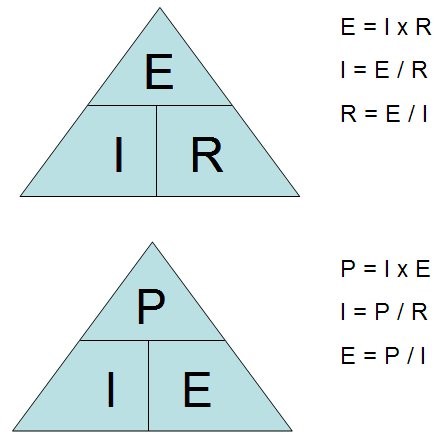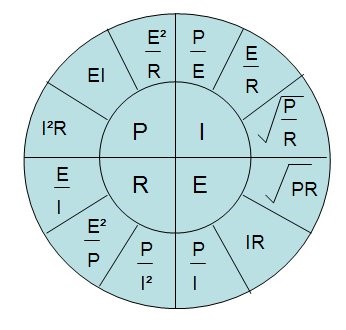Electrical Theory
This page contains links to the following circuit diagrams
This page contains links to the following circuit diagrams
Electrical theory is important, to understand the amounts of current in an electrical circuit, you need this to be able to ascertain how the voltage and resistance combine to use the current supplied. It also gives you the information to select the correct fuse or circuit breaker to use in your circuits.
The relationship between the 3 elements can also be used to calculate the power, or the power and one of the 3 elements can tell you the current, but first the theory -
Current - when electrical pressure (voltage) from a source of power is connected to the circuit, it allows the electrons to pass from atom to atom along a piece of wire, the greater the movement of electrons passing a certain point in the circuit equates to the amount of current in a circuit. The intensity of the electrical current is measured in AMPERES (amps) the common indication is "A", the amount of current in a circuit is expressed as "I".
Voltage - is the amount of pressure at the source of a circuit that is used to generate the current, the letter "E" is used to identify this (E also stands for electromotive force) and "V" is the quantity of electrical pressure to produce the current.
Resistance - is the property of the material that causes the opposition of the movement of electrons through the wire, every material has some or a lot of resistance to this movement. Copper wire has little resistance to this electrical movement (known as conduction) whereas materials that have higher resistance (porcelain for example) are known as insulators. Resistance is measured in OHM'S the symbol to represent this is the greek letter for Omega, however the letter "R" is used to represent the resistance in formulas.
Thats all good but how does Ohm's law work?
The Ohm's law is used to show the relationship between the 3 elements V, I and R and stated that the current is directly proportional to the voltage applied to the circuit but inversley proportional to the resistance in a circuit.........................
So according to Ohm's law, when the resistance with in a circuit is at a constant, changing the voltage can change the current, which means as the voltage rises the current will rise and vice a versa.
The following symbols are used:
E = quantity of electrical pressure in volts R = the amount of resistance in Ohm's I = Intensity of the current in Amperes P = the amount of power or Watts Below are the pyramids of Ohm's law

this is also then supported by the disc of P, I , R and E
